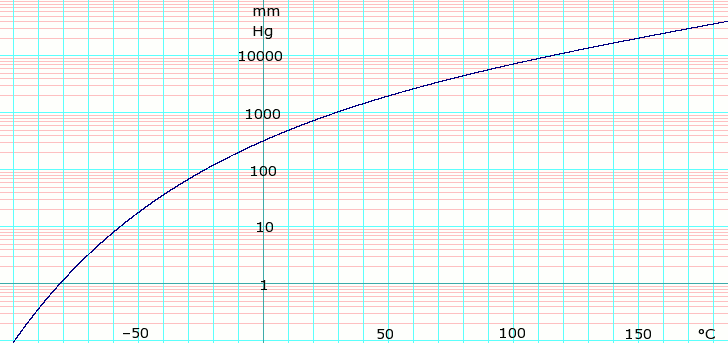Acetaldehyde (data page)
This page provides supplementary chemical data on acetaldehyde.
Material Safety Data Sheet
The handling of this chemical may require safety precautions. The directions on the Material Safety Datasheet (MSDS) should be followed.
Structure and properties
| Structure and properties | |
|---|---|
| Index of refraction, nD | 1.3392 at 18°C |
| Abbe number | ? |
| Dielectric constant, εr | 21.1 ε0 at 21 °C |
| Bond strength | ? |
| Bond length | ? |
| Bond angle | ? |
| Magnetic susceptibility | ? |
| Surface tension[1] | 22.3 dyn/cm at 10°C 21.2 dyn/cm at 20°C 17.0 dyn/cm at 50°C |
| Viscosity[2] | 0.2751 mPa·s at 0°C 0.2521 mPa·s at 10°C 0.2307 mPa·s at 20°C |
Thermodynamic properties
| Phase behavior | |
|---|---|
| Triple point | ? K (? °C), ? Pa |
| Critical point[3] | 466 K (183 °C), 5570 kPa |
| Std enthalpy change of fusion, ΔfusH |
2.310 kJ/mol |
| Std entropy change of fusion, ΔfusS |
15.43 J/(mol·K) |
| Std enthalpy change of vaporization, ΔvapH |
26.12 kJ/mol |
| Std entropy change of vaporization, ΔvapS |
? J/(mol·K) |
| Solid properties | |
| Std enthalpy change of formation, ΔfH |
? kJ/mol |
| Standard molar entropy, S |
? J/(mol K) |
| Heat capacity, cp | ? J/(mol K) |
| Liquid properties | |
| Std enthalpy change of formation, ΔfH |
–196.4 kJ/mol |
| Standard molar entropy, S |
117.3 J/(mol K) |
| Enthalpy of combustion, ΔcH |
–1167 kJ/mol |
| Heat capacity, cp | 96.21 J/(mol K) at 0°C 89.05 J/(mol K) at 25°C |
| Gas properties | |
| Std enthalpy change of formation, ΔfH |
–170.7 kJ/mol |
| Standard molar entropy, S |
250.3 J/(mol K) |
| Heat capacity, cp | 55.32 J/(mol K) at 25°C |
Vapor pressure of liquid
| P in mm Hg | 1 | 10 | 40 | 100 | 400 | 760 | |
| T in °C | –81.5 | –56.8 | –37.8 | –22.6 | 4.9 | 20.2 | |
Table data obtained from CRC Handbook of Chemistry and Physics 44th ed.

Spectral data
| UV-Vis | |||||||||||||||||||||||||||||||||
|---|---|---|---|---|---|---|---|---|---|---|---|---|---|---|---|---|---|---|---|---|---|---|---|---|---|---|---|---|---|---|---|---|---|
| λmax | ? nm | ||||||||||||||||||||||||||||||||
| Extinction coefficient, ε | ? | ||||||||||||||||||||||||||||||||
| IR | |||||||||||||||||||||||||||||||||
| Major absorption bands[4] |
| ||||||||||||||||||||||||||||||||
| NMR | |||||||||||||||||||||||||||||||||
| Proton NMR | |||||||||||||||||||||||||||||||||
| Carbon-13 NMR | |||||||||||||||||||||||||||||||||
| Other NMR data | |||||||||||||||||||||||||||||||||
| MS | |||||||||||||||||||||||||||||||||
| Masses of main fragments |
|||||||||||||||||||||||||||||||||
References
- ↑ Lange's Handbook of Chemistry, 10th ed. pp 1661-1663
- ↑ Lange's Handbook of Chemistry, 10th ed. pp 1669-1674
- 1 2 "Pure Component Properties". Chemical Engineering Research Information Center. Archived from the original on 3 June 2007. Retrieved 27 May 2007.
- ↑ "Spectral Database for Organic Compounds" (Queriable database). Advanced Industrial Science and Technology. Retrieved 9 June 2007.
"NIST Standard Reference Database".
Except where noted otherwise, data relate to standard ambient temperature and pressure.
Disclaimer applies.
This article is issued from Wikipedia - version of the 9/9/2016. The text is available under the Creative Commons Attribution/Share Alike but additional terms may apply for the media files.